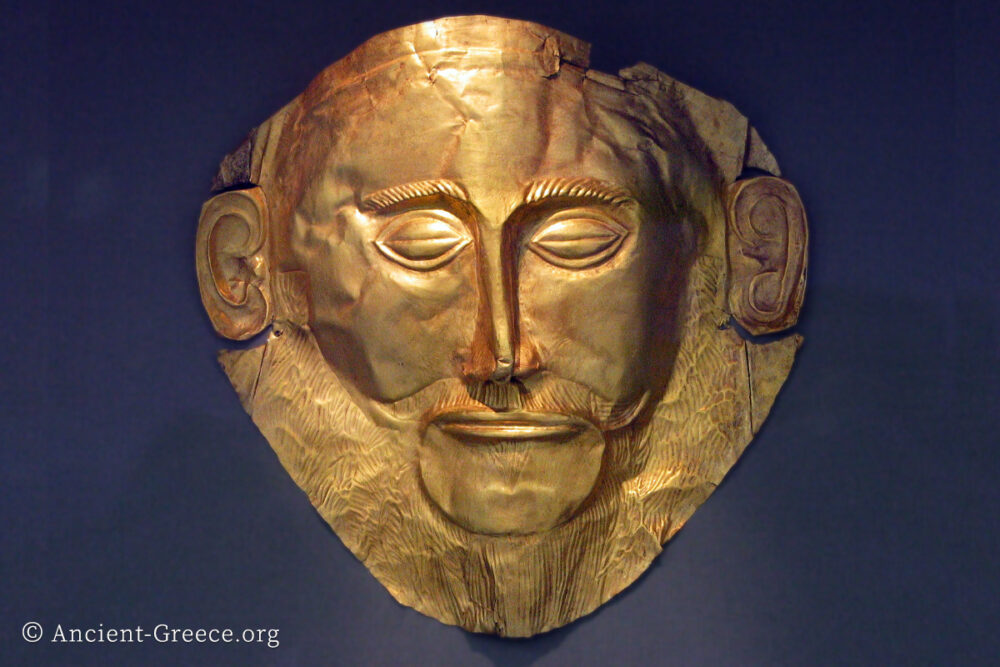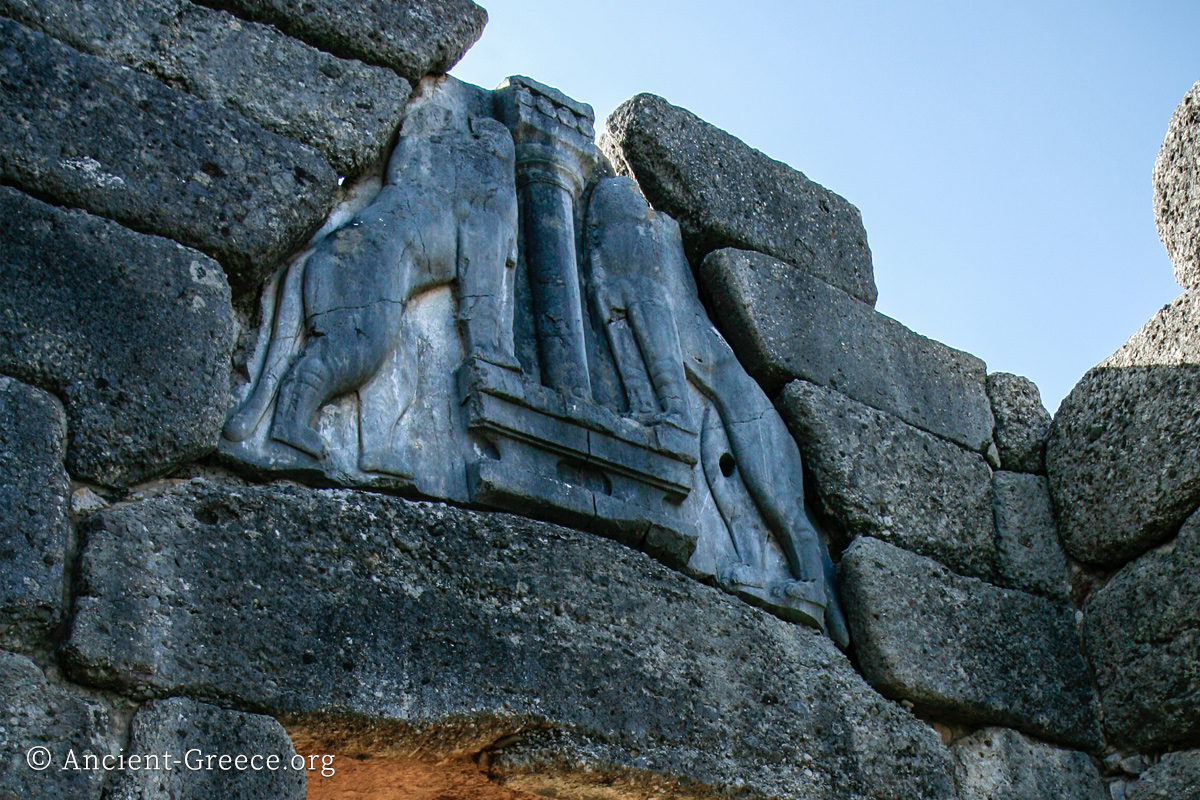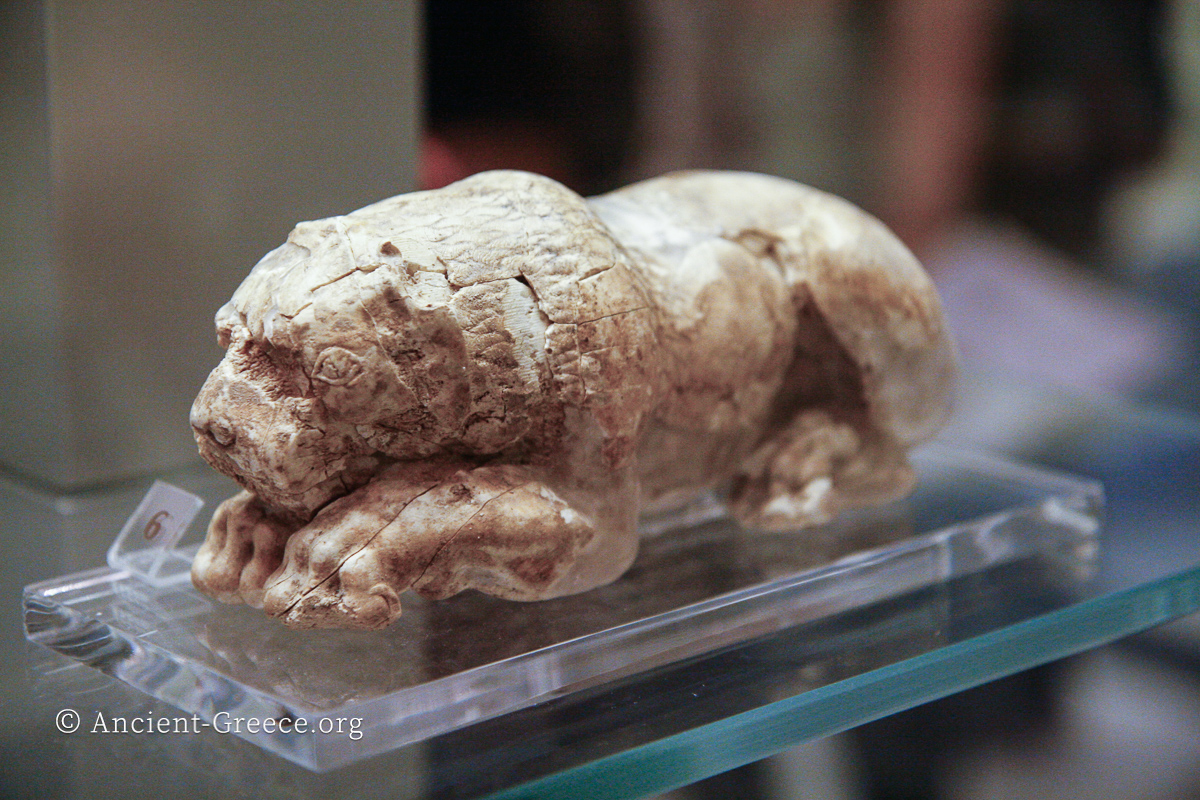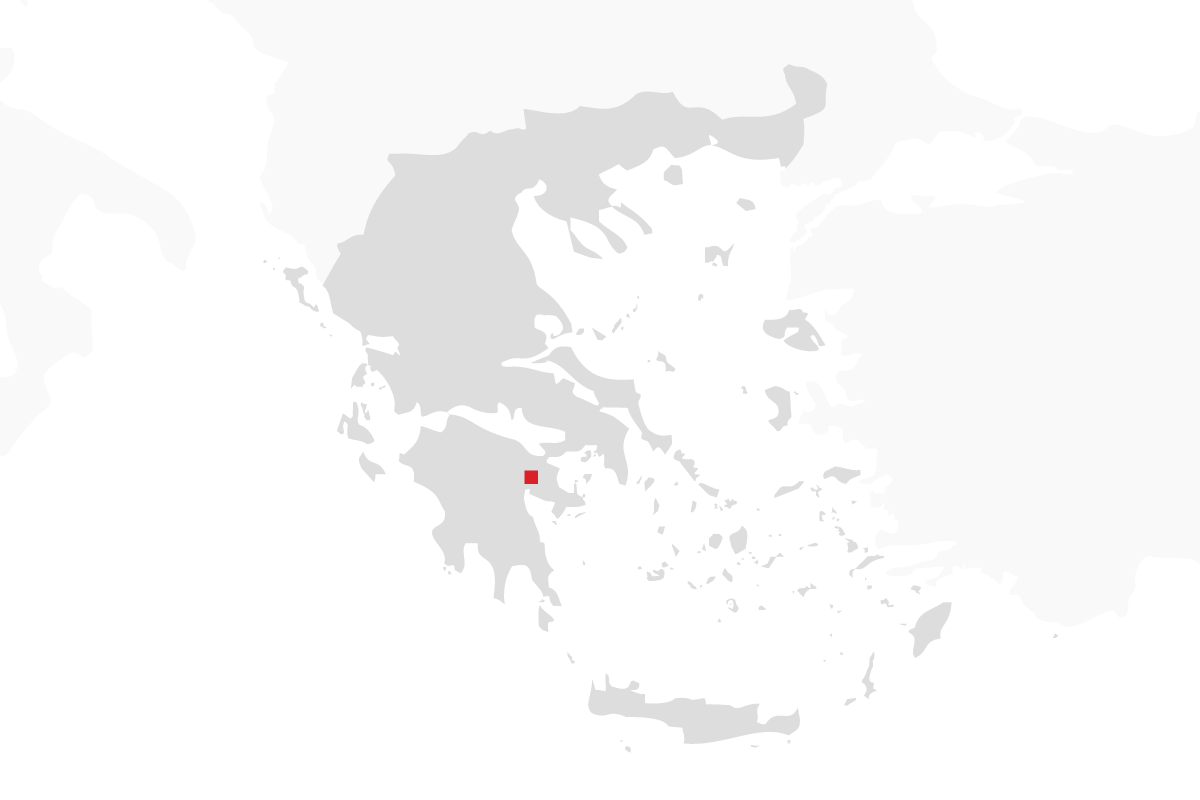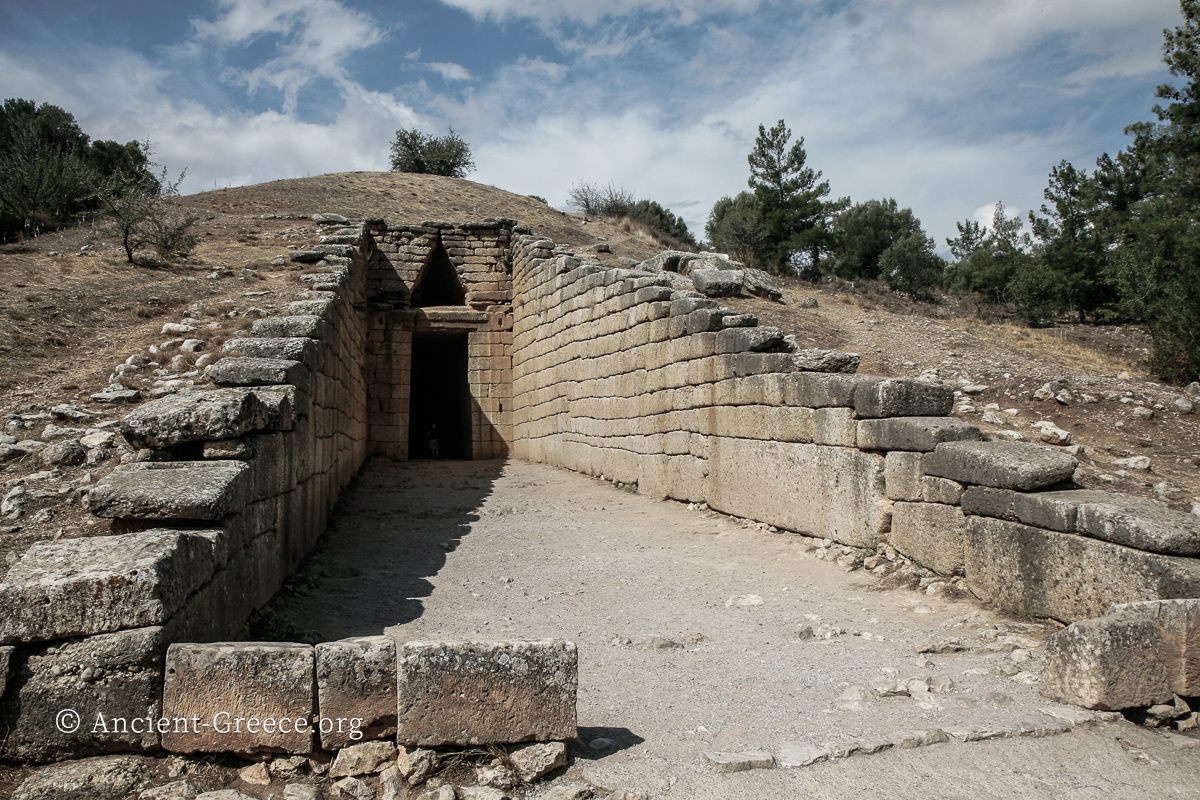
On this page:
The tholos tomb at Mycenae known as “Treasury of Atreus”, built between 1350 and 1250 BCE, is the largest, best preserved, and one of the latest built in the Bronze Age. It is also known as “Tomb of Agamemnon”.
Its function as the tomb of Atreus, the father of Agamemnon, is by no means certain, but it is an architectural masterpiece indicative of the high craftsmanship levels Bronze Age masons had reached.
Its entrance is framed by megalithic elements and the entire monument is constructed with exceptionally well dressed stones.
The tomb was never buried by earth and remained always visible throughout the centuries, so it is no surprise that it was robbed in antiquity and we have no indication of the persons buried within, or of the accompanying artifacts that certainly were buried alongside them.
Dromos and Entryway



The dromos (corridor leading up to the entrance) is 35m long by 6m wide and its carefully laid stones were waterproofed in the back with a layer of clay. The monumental door opening is about 5.5m high with the characteristic relieving triangle crowing its lintel that consists of two massive stone slabs, of which the inner-most weighs approximately 120 metric tons.
Tholos Tomb Chamber


The tholos itself is 14.5 meters in diameter and 13m high. It is made of 33 concentric circles of dressed stones where one circle overlaps the one immediately below towards the inside, until the concentric circles end in a single stone at the very top (corbelling). Once all the stones were in place, masons carved away the overlapping parts of the stones leaving a smooth wall.
The wall opening to the left of the same photo is the entrance to the adjacent rock-cut chamber (off limits to visitors today) which was probably decorated with sculpted slabs on the walls.


